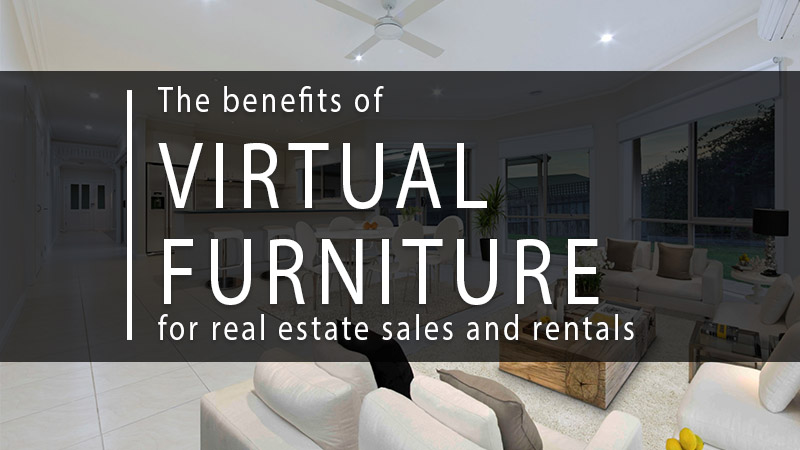“… has proven excellent results in us being able to achieve maximum interest levels and numbers attending our open for inspections, with the subsequent leasing of that property quickly, at the highest rental return possible.”
– Sarah Latham, owner and director of Latham Cusack Property Services’ North Shore office
The quote above was from a blog post at Residential Property Manager called “Turning to the virtual world for real life success“, and if you’re not familiar with it virtual furniture is a service offered by a lot of real estate photographers where they use Photoshop or 3D software to add furniture to an otherwise empty room.
As Sarah notes in her article, the use of virtual furniture in her rentals has helped to attract more tenants, meaning less time that a property is left vacant.
However, the virtual furniture also dresses up a home with perfect interior styling, meaning that property management companies can secure the highest possible fee for their rentals.
And as noted in the Daily Mail article, “The latest real estate trick to lure buyers“:
“Sellers are saving ‘thousands’ of dollars by paying photography companies like High Shots to add virtual furniture to their photos instead of hiring the real thing, and this is also pushing the value of properties up.”
What about the buyers? Are they annoyed by seeing photos of a furnished home and arriving to find that it’s empty when they visit it? According to real estate agent Graham Green that hasn’t been a problem for him, and he’s used virtual furniture a lot:
‘At the end of the day the better looking it is the more people who will fall in love with it’.
Or as one virtual furniture service provider mentioned in this article, “Virtual reality technology transforms real estate“:
“We say it is for illustration only; if people come through and say, ‘where’s the furniture?’, be honest and tell them it is digitally staged.”
Most buyers are fairly understanding of that, so long as the actual features and presentation of the home they are thinking of buying isn’t changed. In other words, when it comes to digitally altering images for real estate sales placing a dining table in a room that was actually empty when the photographer took the photo is fine, but repairing a large hole in a wall is not. In real estate marketing it all comes down to what’s permanent, and what’s temporary, and virtual furniture is very temporary.
Here are a few samples of virtual furniture so you can see what’s possible:
[soliloquy id="1293"]

